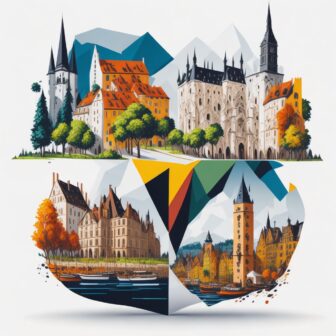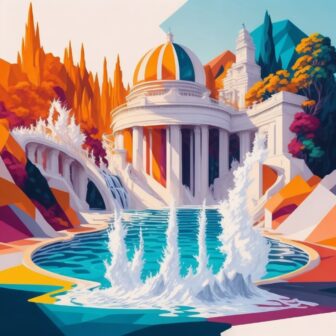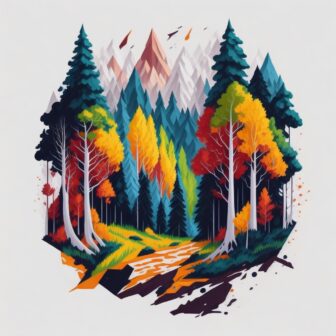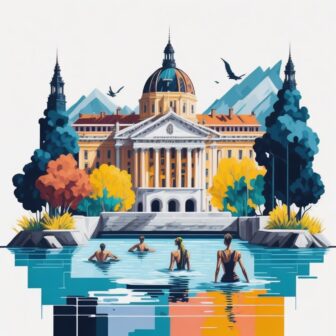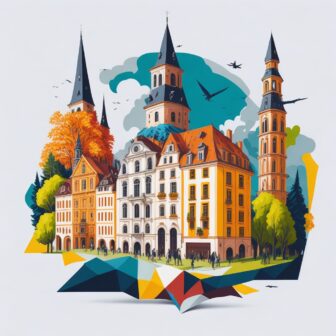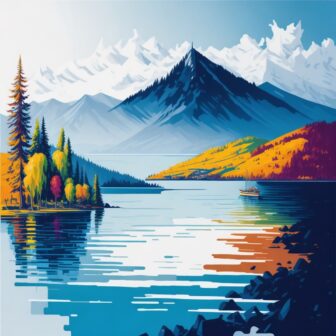12 Best Places to Experience Local Culture in Germany
Germany effortlessly blends classic and contemporary elements to offer a range of experiences, making it one of Europe’s most popular destinations. From city thrills and natural retreats to cultural treats and family-friendly adventures, this central European hub has it all.
Taste and craft are two themes that epitomize the fusion of tradition and modernity in Germany. Whether you’re into savoring delicious dishes and world-class wines or shopping for fashion or furniture, you’ll find a generous array of styles and flavors to suit your preferences.
Germany’s “green” credentials are well-established and continue to grow each year. With an abundance of national parks, hiking and cycling trails, and breathtaking landscapes, you’ll have plenty of opportunities to explore the great outdoors. And let’s not forget Germany’s FLAIR, which can be seen in everything from architecture to art and metropolitan charms.
If you’re planning a dream trip to Germany, explore the diverse regions and local cultures for yourself. Here’s a list of the best destinations and some of the delightful experiences they have in store.
Baden-Baden
Welcome to Baden-Baden, a charming city nestled in the heart of Germany’s Rebland wine region, known for producing some of the world’s finest Riesling, Pinot Noir, Pinot Bianco, and Pinot Gris wines. Wine connoisseurs will revel in the countless sun-drenched vineyards and top-notch bottles that are produced here, along with sparkling wines and schnapps. As you explore the lush landscape, dotted with castles, palaces, and endless rolling hills, take in the stunning views of the Rebland region.
Beyond its rich culinary offerings, Baden-Baden is also renowned for its impeccable craftsmanship. Vickermann und Stoya, founded in 2005, is a top-notch purveyor of handcrafted shoes made from the finest leather and other elegant materials. Their bespoke creations are perfect for taking a comfortable stroll along the elegant boutiques of the Kurhaus colonnades.
Nature enthusiasts will find plenty of green escapes in Baden-Baden, from well-maintained parks and gardens to the majestic Merkur Mountain, which is the highest point in greater Baden-Baden. For unforgettable views and stunning sunsets, take a ride on the traditional funicular railway to the top of the mountain, where you can even watch paragliders launch.
No visit to Baden-Baden is complete without experiencing the Kurhaus, an iconic spot that dates back to 1766. This historic building, originally built for the local margrave, houses “the most beautiful casino in the world,” as Marlene Dietrich once said. Today, it is also home to elegant classical concerts performed by the venue’s philharmonic orchestra, top-notch cuisine at The Grill restaurant, and cocktails at the swanky Bernstein Club.
So, come and experience the Rebland region’s gem, Baden-Baden, where you can indulge in fine wines, impeccable craftsmanship, stunning nature, and world-class entertainment.
North Rhine-Westphalia (NRW)
Welcome to North Rhine-Westphalia, where the local culture of beer and brewing runs deep. In Cologne, locals enjoy the light and top-fermented Kölsch beer, served in narrow 200ml glasses. Meanwhile, Düsseldorf proudly claims Alt beer, Kölsch’s friendly rival. But the state’s impressive beer scene extends beyond these two traditional styles, with craft beers from smaller breweries and some of Europe’s best-known Pilsners, including Krombacher, Warsteiner, and Veltins.
Mustard may be one of the oldest spices in the world, but in Monschau, the historic Mustard Mill is keeping the tradition alive. Owner Ruth Breuer, a fifth-generation mustard miller, welcomes visitors to learn about the production of this world-famous condiment. After touring the mill and purchasing some mustard products from the shop, head to the Schnabuleum Restaurant for hearty local cuisine and a visit to the mill’s wine cellar.
North Rhine-Westphalia may be Germany’s most populous state, but more than half of it is covered in forests, rivers, meadows, and fields. Explore the 400-hectare Merfelder Bruch nature preserve near Dülmen, where wild horses roam free. In the Münsterland region, you can spot flamingos during the summer months and long-haired highland cattle. The Lower Rhine River is home to wild Artic geese, great white egrets, and even beavers and wildcats. Don’t forget to check out the wild geese, bees, bison, and butterfly colonies throughout the state.
Münster is a must-visit for its impressive architecture and rich history. Marvel at the stunning Town Hall, where the Peace of Westphalia was concluded, and admire the gabled houses on Prinzipalmarkt. The Schloss Münster, a lavish city palace constructed between 1767 and 1787, is also worth a visit. Don’t miss the harbor district, now a vibrant hub with restaurants, clubs, and art projects. Explore the state’s many bike-friendly routes, including the 100-CASTLES-ROUTE and the car-free Ringpromenade.
Bayreuth
Bayreuth, in Franconia, is a gem for foodies. Here, Franconian cuisine is given a fresh twist in a variety of cozy eateries. Plus, the region boasts numerous bakeries, butcher shops, and breweries, all using locally sourced and sustainable ingredients. Keep an eye out for the “Original Regional” label to guarantee an authentic and delicious culinary experience.
If you’re a beer lover, Maisel’s Beer World in Bayreuth is a must-visit. This historic venue offers visitors a glimpse into the fascinating art of brewing, complete with tastings of their hoppy creations. And after your tour, enjoy a tasty meal at Liebesbier restaurant, right next door.
Beautiful Bayreuth is the perfect starting point for exploring two of Germany’s most stunning holiday regions. In the northeast, the Fichtel Mountains beckon hikers and cyclists with trails for all levels. And in the southwest, the romantic Franconian Switzerland awaits, with pristine valleys, medieval castles, and bouldering and climbing opportunities.
Bayreuth’s Margravial Opera House is a world-renowned treasure, now a UNESCO World Heritage Site. Commissioned by the Margravine Wilhelmine, a talented artist in her own right, this opera house was designed by the legendary theater architect, Giuseppe Galli Bibiena, and built between 1744-1748. Modeled on the finest opera houses in Vienna and Dresden, it’s a must-see for any visitor to Bayreuth.
RELATED:
Bavaria
If you think mountains and meat are inseparable, think again. The Hündeleskopfhütte, the first-ever vegetarian mountain hut in the Alps, is shaking things up. Tucked away near Pfronten, between Lindau and Füssen, the hut offers an enticing array of vegan dishes inspired by traditional family recipes. From cheesy spätzle to mouth-watering zucchini lasagna, you won’t even miss the Schnitzel or roasted pork!
Bavaria is renowned for its goldsmithing tradition, and Florian Blickenberger is a local jewelry designer committed to preserving this craft in his own unique way. His designs are inspired by the breathtaking landscapes of Bavaria, from sparkling lakes to majestic mountains. A beautiful piece of jewelry from his collection is the perfect keepsake to take home with you.
The Bavarian Forest National Park, located two hours east of Munich, is a natural wonderland that showcases the best of Germany’s great outdoors. The park boasts vast forests, lofty peaks, crystal-clear streams, and the stunning glacial Lake Rachelsee. Don’t miss the treetop walk, a thrilling adventure that takes you 1,300 meters above ground, with an awe-inspiring view of the surrounding landscape.
Würzburg is a charming town nestled amidst picturesque vineyards and architectural treasures that tell the story of its rich history. The Würzburg Residence, built in the mid-18th century by the legendary Balthasar Neumann, is a marvel of European royal courts. Adorned with a breathtaking ceiling fresco by Tiepolo, it’s no wonder the Residence has been a UNESCO World Heritage Site since 1981.
RELATED:
Festivals and customs in Germany
Essential Bucket List Experiences in Germany
Bremerhaven
Bremerhaven’s Schaufenster Fischereihafen, aka Shop Window Fishery Harbor, is a mecca for seafood lovers seeking a taste of local flavor. The renovated fish-packing hall is now home to an array of bustling bars and restaurants, serving up delicacies such as shrimp, fish sausage, and herring. A visit to the smokehouse is a must, where you can sample freshly smoked fish and pick up some goodies to take home. And if you’re lucky, you might catch one of the cooking demonstrations held in the converted fish-shipping hall.
Bremerhaven is a city that takes its art seriously. The main art museum showcases works spanning over a century, while the former home of landscape painter Paul Ernst Wilke has been transformed into a unique guest atelier. Be sure to check out “Kunst-Werk – Werk-Kunst,” an all-female project in the charming Alte Bürger neighborhood. Don’t miss the chance to visit local businesses such as a glass shipyard and ceramics workshop, where you can find one-of-a-kind treasures.
While Bremerhaven may be best known for its maritime heritage, there are plenty of green spaces to enjoy. The Luneplate Nature Reserve is a haven for bird-watchers, while the Bürgerpark is a favorite spot for strolling, jogging, or boating. And if you’re traveling with kids, head to the family-friendly Speckenbüttel health park, where you can relax by the pond, take a walk down the tree-lined avenue, or let the little ones burn off some energy at the playground.
Bremerhaven is a treasure trove of maritime history and culture. Be sure to check out the Climate Experience Center Bremerhaven, German Emigration Center, and German Maritime Museum, which boasts a submarine parked right outside. And for an unforgettable animal encounter, visit the Zoo at the Sea, where you can observe Nordic wildlife above and below the waterline. Don’t forget to drop by the North Sea Aquarium for an up-close look at the fascinating sea creatures that call this region home.
Berlin
If you’re looking for a culinary adventure, look no further than Berlin’s dynamic food scene. From Israeli breakfast at Benedict to the Michelin-starred Coda Dessert Bar and the Good Bank, the world’s first vertical farm-to-table restaurant, Berlin’s multicultural and experimental food scene has something for everyone.
If you’re into crafts, head over to Kreuzberg’s Markthalle Neun, where you can sample regional and German products alongside delicious street food from Italy, India, Mexico, Sri Lanka, and more. The Arminiusmarkthalle in Moabit is another great option, offering traditional staples like Fischbrötchen and international dishes like fish & chips and barbecued beef brisket.
If you’re craving some green space, why not check out Tempelhofer Feld? This former airport is now one of Europe’s largest public parks, perfect for picnics, bird watching, cycling, kite surfing, and more.
Art lovers won’t want to miss the Artpark Tegel project. This community-focused initiative began with a mural on a residential building and has since expanded to include works by both local and international street artists. So come and explore all that Berlin has to offer, from its vibrant food scene to its beautiful parks and world-class art!
RELATED:
Things to Do in Berlin for Young Adults
Shopping in Berlin
Regensburg
Foodies rejoice! Regensburg is a gastronomic paradise. Sink your teeth into local meat delicacies and smother them in the sweet Händlmaier mustard at the Wurst & Bier store, or visit the Wurstkuchl (Sausage Kitchen), an iconic eatery that’s been serving up mouth-watering bratwurst since the 12th century. For something sweet, don’t miss the chocolates at Café Prinzess. And if you’re in the mood for a truly decadent culinary experience, Regensburg boasts three Michelin-starred restaurants.
Craft enthusiasts should not miss the Craft Walk, a delightful tour organized by the tourist board. You’ll discover Regensburg’s rich history of medieval crafts and trades, as well as contemporary stores and ateliers. Highlights include a visit to the milliner who created the famous hat from Alice in Wonderland, Stradivarius violins, hand-woven baskets, intricately crafted chess boards, and bespoke shoes.
Regensburg is not only a feast for the eyes, but also for the environmentally conscious traveler. The city is committed to sustainability, and offers practical information for travelers on sustainable accommodations, dining options, shopping, and other eco-friendly activities. Be sure to check out the special website (English version available in early 2023).
Regensburg is a vibrant city with a youthful Bavarian-Italian vibe. There’s always something exciting happening here, from the world-famous concert festival in the Thurn and Taxis Palace in July to the lively Dult beer festival, held twice a year in spring and autumn. And during December, the city is transformed into a winter wonderland with festive Christmas markets, including the dazzling market in the courtyard of the Thurn and Taxis Palace.
Dresden
Dresden’s famous Christstollen pastry is a must-try delicacy, exclusively baked by local bakeries and confectioneries. First mentioned in 1474, it’s now the highlight of the Striezelmarkt, one of the oldest Christmas markets in the world. Enjoy the buttery, raisin-filled goodness while immersing yourself in the festive atmosphere.
The obsession of Saxon prince elector Augustus the Strong with porcelain led to the establishment of Europe’s first porcelain factory in Meissen in 1710, still operating today. Take a tour and marvel at the intricate craftsmanship of Meissen porcelain, before strolling through the charming streets of Meissen, visiting the castle and the Gothic cathedral.
Dresden and the surrounding Elbland are a paradise for lovers of grand palaces and castles set against stunning natural backdrops. Admire the beauty of Dresden’s Royal Palace and Zwinger Court, marvel at Saxony’s first baroque palace in Dresden’s Great Garden, and visit the impressive summer residence of Pillnitz with its unique Chinese-inspired architecture. For a unique experience, don’t miss the floating hunting lodge of Moritzburg set amidst picturesque artificial lakes.
In 1736, Johann Sebastian Bach performed on the newly built organ at Dresden’s Frauenkirche, now one of the most important churches in the city. Destroyed in 1945 during World War II, it was rebuilt as a symbol of peace and reconciliation after the fall of the Wall. Today, you can once again listen to Bach’s masterpieces in this magnificent venue.
Saxony
In the Ore Mountains of Saxony, a UNESCO World Heritage Site, you can savor the Neinerlaa, a traditional Christmas dinner consisting of nine components that represent good wishes for the upcoming year. But don’t worry if you’re not visiting during the holidays, you can still enjoy this hearty meal year-round at Ratskeller Zum Neinerlaa in Annaberg-Buchholz, served on a patented plate.
The Moravian Stars that sparkle on Christmas trees across Germany have a rich history. These beautiful ornaments are still made in the Saxon town of Herrnhut, the birthplace of the Moravian Church. The stars were first created in the 18th century as a geometry exercise for children, and the current version, which can be disassembled, dates back to 1897.
Hermann Prince von Pückler-Muskau was not only a world traveler and soldier but also a brilliant self-taught landscape architect. In 1815, he established the stunning Muskau Park, which is now a UNESCO-approved site. This park, located in Saxony, is a testament to Prince von Pückler-Muskau’s genius and dedication to creating beautiful and harmonious landscapes.
If you’re looking for a unique wine experience, head to Weingut Klaus Zimmerling in Pillnitz, on the outskirts of Dresden. Here, you can sample award-winning wines made without herbicides or synthetic pesticides, all while admiring the creative artwork on the labels and the beautiful decoration throughout the winery. The winery is a unique collaboration between Polish artist Malgorzata Chodakowska and German engineer Klaus Zimmerling.
Rhineland-Palatinate
Get a taste of the Middle Ages with a Gasterey feast fit for a lord and high-ranking knights at Reichsburg Castle in Cochem, Rhineland-Palatinate. Perched atop a mountain peak overlooking the town and Moselle River, indulge in hot beef soup and pork knuckle followed by cheese and cake.
Idar-Oberstein has been a hub for precious stones and jewelry for centuries, with royalty flaunting locally sourced gems. Today, skilled jewelry makers continue the tradition, crafting exquisite pieces sold by luxury brands worldwide. Don’t miss the German Gemstone Museum, offering a glimpse into this dazzling world.
The Geierlay suspension bridge, dubbed the “Queen of Bridges” in Rhineland-Palatinate, stretches 360 meters long and attracts hikers from far and wide. Marvel at the technical mastery of the construction and the stunning natural landscapes of the Hunsrück area, with its verdant forests and numerous trails.
Eltz Castle, perched on a rocky outcrop at the edge of the Eifel, just 5km from the Moselle River, is one of Germany’s most iconic and picturesque structures. Since 1157, it has been home to the Moselle’s noble Eltz family, who still run the property today. Don’t miss a guided tour to immerse yourself in the history of this remarkable castle.
Wiesbaden
If you’re a wine enthusiast, Wiesbaden is the place to be! Situated in the Rheingau wine-growing region, the city boasts numerous vineyards run by renowned winemakers who produce top-notch Pinot Noirs, Rieslings, and other varietals. Take a tour of local wine cellars (Gutsausschank) and taverns (Straußwirtschaft) and enjoy wine-related events, festivals, and hiking trails.
Jugendstil, or Art Nouveau, was a revolutionary movement that used art to explore possibilities for an aesthetically determined society. At the south wing of the Museum Wiesbaden, you can find the Jugendstil collection of Ferdinand Wolfgang Neess. With over 500 works, it offers a compelling cross-section of the genre and is definitely worth a visit.
For breathtaking views of the city and its vineyards, head to Neroberg, a 245-meter-high hill accessible via a funicular railway. The hill offers not just amazing vistas, but also outdoor activities such as the Neroberg Nature Trail and Neroberg Climbing Course. After a long day of exploring, relax at the Opelbad, an outdoor swimming pool.
At Café Maldaner, you can travel back in time while indulging in some sweet treats. This café has been serving delicious cakes since 1859 and has a classic Viennese-style coffeehouse vibe with its striped walls, crystal chandeliers, and classical music. Satisfy your sweet tooth with a range of tasty treats like chocolate cakes, meringues, apple strudel, and more. And don’t forget to people-watch the wonderfully diverse clientele.
RELATED
Living in Germany as an Expat: A Comprehensive Guide
Dual Citizenship Gets Green Light from German Cabinet
Bonn
Bonn is the birthplace of one of the world’s most beloved candies – gummy bears! HARIBO, short for Hans Riegel Bonn, was founded in 1920 by Hans Riegel, the inventor of the iconic jelly candy that has been sweetening the lives of generations. The company’s factory outlet in Bad Godesberg is a must-visit for fans of gummy bears, where you can stock up on your favourite kind.
Bonn’s Museum Mile is home to the Kunst- und Ausstellungshalle der Bundesrepublik Deutschland, a grand exhibition hall showcasing modern and contemporary art. The hall hosts an array of rotating exhibits, ranging from photography to sculpture, painting, and multimedia installations. With its stunning architecture and world-class exhibitions, the Kunst- und Ausstellungshalle is a must-visit for art enthusiasts.
Bonn is home to several beautiful green spaces, but none are quite as impressive as the Rheinaue. This vast parkland, located on the banks of the Rhine River, offers something for everyone – from cycling and boating to mini-golf and BBQ stations. In the summer months, the Rheinaue is the perfect spot for a picnic or a game of frisbee.
The Beethoven-Haus in Bonn is a must-visit for music lovers. This grand building, where Ludwig van Beethoven was born, is now home to a fascinating museum documenting the life and work of the legendary composer. The Beethoven-Haus features an impressive collection of instruments, manuscripts, and memorabilia, as well as rotating exhibitions on Beethoven’s life and legacy.
RELATED:
Best Places to Visit in Bonn

